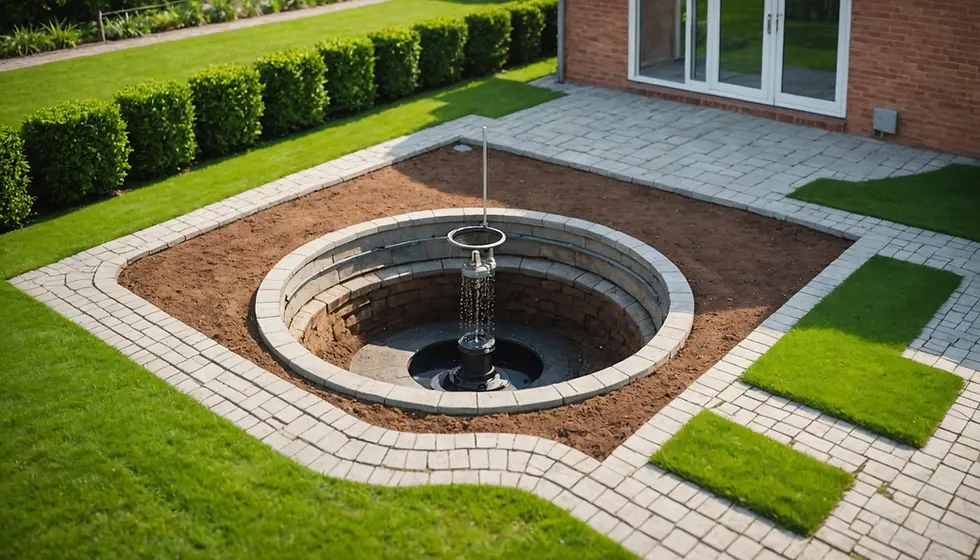How to Choose the Best Grass for Planting Near Trees in Arkansas
- Garrett Williams
- Jan 15
- 4 min read
Planting grass near trees offers a unique opportunity for Arkansas homeowners to enhance their landscapes. Not only does it beautify your yard, but it can also increase your property’s value. However, selecting the right grass for shaded areas or places where tree roots vie for nutrients can be challenging. This guide highlights some of the best sod options to achieve a harmonious balance between greenery and tree health.
Understanding the Influence of Trees on Grass Growth
Before you choose your grass, it's essential to grasp how trees impact growth. Trees provide shade that can alter the conditions necessary for grass to thrive. For example, shaded areas receive significantly less sunlight, which can result in slower growth rates. Additionally, tree roots compete for essential moisture and nutrients in the soil.
Choosing grass types that adapt to these conditions is crucial. If you don’t, you may end up with patchy, struggling turf that does not complement your trees.
Assessing Your Yard's Conditions
Before embarking on sod installation, assess several key factors in your yard:
Sunlight Exposure: Observe how much sunlight the area receives throughout the day. Is it full sun (6+ hours), partial shade (3-6 hours), or full shade (less than 3 hours)?
Soil Quality: Conduct a soil test to determine its pH and nutrient levels. Properly balanced soil leads to healthier grass growth. For instance, a pH range of 6.0 to 7.0 is ideal for most grass types.
Tree Type: The species of your trees affects the soil and light conditions. For example, oak trees have extensive root systems and can significantly impact nearby grass growth.
Moisture Levels: Monitor how much moisture is available in your yard. Since trees absorb water, ensure you know if you’ll need to irrigate the grass regularly.
Traffic Levels: Consider foot traffic. If your grass area sees heavy use, select a durable grass type.
By assessing these factors, you will be better equipped to choose suitable sod for your setting.
Best Types of Grasses for Planting Near Trees in Arkansas
Now that you’ve evaluated your yard, let’s discuss sod types that thrive near trees in Arkansas:
1. Fescue Grass
Fescue is one of the most common grass types for shaded areas. This cool-season grass flourishes in partial shade, making it ideal for spots right next to trees. Its robust root system successfully competes for moisture, which is essential in shaded areas.
Ideal Use: Residential lawns heavily shaded by trees.
2. Zoysia Grass
Zoysia grass adapts well to a variety of environments, including full sun and partial shade. This warm-season grass is highly durable and can handle foot traffic well. Its drought tolerance allows it to thrive even when nearby trees absorb groundwater.
Ideal Use: High-traffic areas and lawns that experience moderate shade.
3. Bermudagrass
Though Bermudagrass prefers full sun, it can tolerate some shade. If you have large trees that allow for dappled sunlight, this grass can do well. It’s a warm-season type known for its quick establishment rate, making it perfect for establishing a lawn rapidly.
Ideal Use: Play areas, sports fields, or properties that enjoy plenty of sun with some shade.
4. Buffalograss
Buffalograss, a native warm-season grass, is highly drought-resistant and primarily thrives in full sun but can handle some shade. It is low-maintenance; it requires less water and fewer chemicals, making it an environmentally friendly choice.
Ideal Use: Low-maintenance areas with mostly sunny conditions and minor shade.
Tips for Successful Grass Installation Near Trees
Once you know which grass type to choose, it’s time to consider installation. Here are some helpful tips:
Soil Preparation: Prepare the soil thoroughly. Loosen it using a tiller and remove debris. A pre-installation soil test will inform you if you need any adjustments.
Sod Laying Technique: Lay sod in a staggered pattern similar to bricks. This helps create a denser root system and minimizes gaps.
Watering Basics: After laying sod, water deeply and consistently in the first few weeks to promote strong roots.
Mowing Schedule: Wait until your grass reaches about 3 inches before mowing for the first time. Regular mowing appropriate to your grass type encourages fullness.
Watch for Weeds: Weeds can be problematic early on. Use a safe pre-emergent herbicide if needed, but ensure it's suitable for young grass.
Common Issues When Sodding Near Trees
Several common issues may arise during your grass planting journey:
Competing Roots: Tree roots may absorb most moisture and nutrients, requiring extra care for your grass to thrive.
Lack of Sunlight: A dense tree canopy can limit sunlight, inhibiting grass growth. Regularly check your grass health and adjust your watering as needed.
Soil Compaction: Tree roots can cause soil compaction, hindering grass root development. Aerating the soil annually can alleviate this issue.
Insect Activity: Trees can attract pests, which may migrate to your grass. Regular monitoring for pest activity is vital for maintaining your lawn’s health.
Regular Maintenance Practices for a Thriving Lawn
After your grass is installed, ongoing maintenance is crucial. Here are essential practices:
Fertilization: Regularly fertilize based on your grass type needs. Nutrients enhance growth and resilience.
Irrigation: Ensure adequate watering by monitoring rainfall. Supplement with irrigation if necessary to prevent drying out.
Pest Control: Stay alert for pest signs and treat them promptly. Consulting local sod suppliers can provide tailored advice.
Regular Mowing: Establish a mowing schedule to maintain healthy grass height and density.
Aeration: Aerate your lawn once a year to relieve compaction and improve nutrient absorption.
Enjoying Your Lawn Transformation
Planting grass near trees in Arkansas can be both beautiful and rewarding. By selecting the appropriate sod, preparing your soil, and maintaining it well, you can create a lush, inviting lawn. If you are ever unsure about the best options or techniques, reaching out to local sod suppliers or professional installation services is a smart choice.
Happy planting, and may your lawn become a source of pride in your neighborhood!





Comments